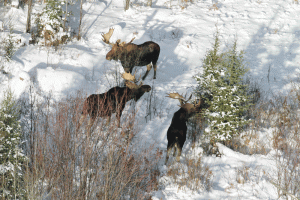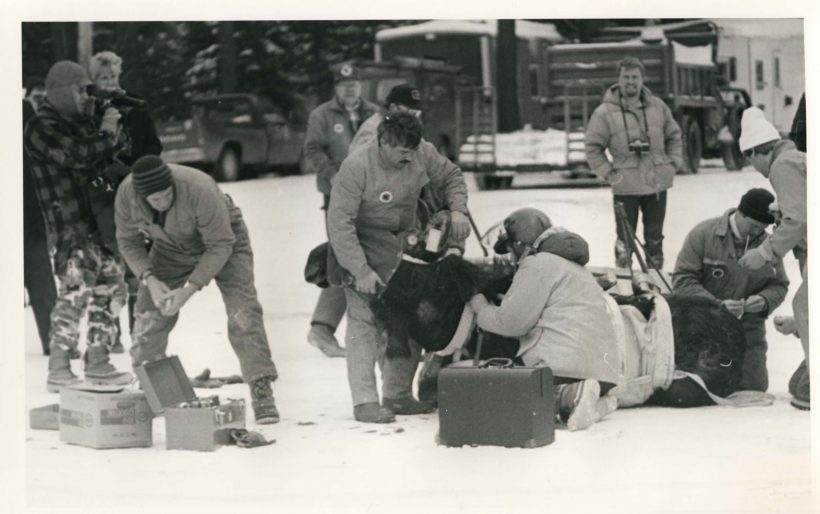MOOSE AIRLIFT – Part 2 -1987
In 1985 29 moose, 10 bulls and 19 cows (mostly pregnant) from Algonquin Provincial Park, were sent to Michigan. During May and June 21 calves were seen with 17 radio-collared cows. Initially the goal had been to gather 30 moose over a two year period. The second transfer in 1987 was meant to speed up the reintroduction. . “We fully expect a herd large enough to support a limited hunt,” said then DNR Wildlife Biologist George Burgoyne in 1985. “Maybe around the turn of the century.”
The Michigan DNR hoped that these seed moose would be the genesis for a herd of1000 by the year 2000.
Hopes in 1987 were once again for 30 moose but this time 15 bulls and 15 cows were translocated. Subsequently, a total of 30 calves were recorded accompanying 27 radio-collared cows. .
By 1999 the Michigan DNR realized that the goal of 1000 moose was not to be. However, the moose had expanded their range to cover some 1800 square miles in Marquette, Baraga and Iron counties as well as several parts of the eastern U.P., most notably around the Tahquamenon River. By comparison, Algonquin P.P. encompasses about 3000 square miles, much of it suitable moose habitat. By the by, while the reintroductions were largely driven and funded by hunters, the benefits are there for hunters and non-hunters alike to enjoy, moose in the U.P., wild turkey in Ontario.
In 2011 there were an estimated 433 moose in the western U.P. No formal survey was carried out in the eastern U.P. but local biologist’s estimated that based upon field observations and reports from the general public there were fewer than 100.
During 2014 moose populations in nearby Minnesota and Ontario were taking a dramatic downturn with no explanation. Biologists were somewhat mystified.

In 2010 legislation passed which authorized the Natural Resources Commission (NRC) to establish a moose hunting season in Michigan. First they needed to receive a report by the 7-member Moose Hunting Advisory Council on the biological and economic implications of a moose hunt.
The main objective, to create a self-sustaining moose population in the western U.P., had been achieved. After the 2019 census wildlife biologists stated the herd was growing at an average of 2% annually and estimated that 509 moose were living in that part of the state. They remain a thrilling tourist attraction. As of 2023 there has been no Michigan moose hunt.
